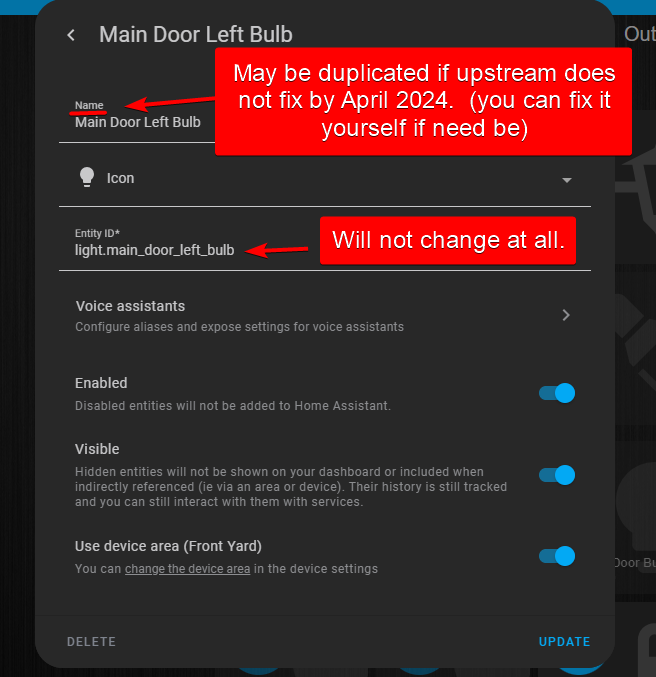surfrock66
- 23 Posts
- 98 Comments

 642·1 month ago
642·1 month agoPart of the free-market attitude though is that you should be allowed to buy policy, so in that regard it’s consistent, you just have to account for corruption in the cost of doing business.
I don’t want to speculate as to the fate of the baby, the corrugated sheet metal had to be moved and it was only a few minutes after I had removed it that we heard the squeaking. Nature is gonna nature, either the squirrel will survive, or a predator will get an easy meal. The thing is, within the family, we will probably ask “is that the squirrel all grown up?” every time we see a squirrel up there for the next few years. I think that’s the best outcome we can hope for.
El Dorado county in California, just north of Placerville, on a hill above the banks of the South fork of the American River.
It had a long worm-like tail. If it was smaller I would have thought mouse, but the leading theories are squirrel or mole.

 10·2 months ago
10·2 months agoIf people are ok with that then I guess it will stand, but it’s insane and anti-consumer in my book. A product costs what it costs, based on supply and demand, and if you can’t afford it you don’t buy it. This flimsy premise of “It lowers the bar to entry so users can upgrade later without having to replace!” will never come to fruition, and it’s too slippery of a slope to “put in a quarter to turn on your A/C”.

 531·2 months ago
531·2 months agoThat is insane. If it costs the same to make, then lower range isn’t a reasonable area to pitch a lower cost vehicle. Wanting to lower the cost is fine. Putting in cheaper/smaller components to get there is fine. If you are using the same components and just software locking them to nickle and dime the users later, that’s anti-consumer and should not be tolerated. I can’t believe how people look at micro-transactions in games and think “wouldn’t this be cool with IRL stuff?”
My setup is a bit extreme, but here are my guardrails:
- All users have the same UID’s on every system. I’m 1000, wife is 1001, son is 1002, daughter is 1003. All these exist on all systems. Our primary group is “family” (gid 10000). Our files are all owned by user:family. This matters because we let them have access to the share of things like home movies and pictures, and I have a TrueNAS with an NFS mount that their user folders rsync to nightly for backup. If you wanna get crazy, you can put in a whole LDAP/freeIPA setup, but that’s a lot (and I did all that as a learning experience).
- They don’t have the account passwords. I have their password, and if they want to use it, the wife or I have to type the password. When we want them off, superkey+L to lock the computer, and if they reboot it comes to a login screen.
- If you really go this route, and go the whole LDAP thing, you can also tie that into apps like Jellyfin. I have a huge library of movies and shows, but there’s a folder called “KidMedia” and I literally manually symlink things to that folder if I want them to have access. I set up the phones/tablet with their own jellyfin accounts, and when they log in they only see their media. I also NFS mount that share, so for the same reason, they can watch stuff on VLC from the computer with access control. We also do that with nextcloud, so we can use nextcloud talk to chat internally. The tablets/phones have built in android controls, so the idea is once they’re on their device, they’re free within the ecosystem I set up and they don’t enter credentials other than device unlock.
I built my kids potato computers from the time they were 3-5, which was during covid. They need computer skills nowadays, and it put them at an advantage for covid school. We got them on java Minecraft which was huge for reading, typing, and some basic math skills (they figured out multiplication for crafting things like doors). I made a chart which had icons of things they want, with the word next to it, so they could search and type in creative.
We used Ubuntu Mate. It’s simple, stable, and familiar. They do NOT have sudo on these boxes. As we’ve advanced, they now have firefox (behind a pihole which upstreams to opendns’ family protect), gimp (with a wacom tablet!), inkscape, calculators, tenacity, libre office, and they’re starting to get into some cad to make things to 3d print. You have to come to terms with doing a LOT of patient hand holding, but it has paid off dividends.

 5·3 months ago
5·3 months agoCable has to come back and fix this, there’s no way he just popped in for a cameo.

 93·3 months ago
93·3 months agoTo be clear, this is a subset of the lunchables brand specifically manufactured and sent to schools for lunches, which has a higher sodium content than the retail variety you can buy. They don’t want to ban all lunchables

 3·3 months ago
3·3 months agoHuge bummer that they’re all 5+ years old. We’ve been moving to libreelec with Disney+, Jellycon, Netflix, Youtube, and amazon prime plugins. It’s not the same, but it’s workable. If Amazon keeps MatterCast open and open source implementations get made, that’s where I’m focusing my attention. A raspberry pi with libreelec that can be a casting target feels, to me, like the holy grail:
https://www.theverge.com/2024/1/9/24030324/amazon-matter-casting-echo-show-fire-tv-prime-video

 7·3 months ago
7·3 months agoNo joke can you share those results? I’m holding out for matter cast
We tried to host it ourselves to save cost, and it’s a beast but it mostly works. It certainly lags behind in features and uses a lot of resources, but when you compare with the cost it’s certainly passable.

 1·3 months ago
1·3 months agoI have submitted feedback multiple times only to click submit and find out I’m no longer logged in. That website is unnecessarily painful.

 25·3 months ago
25·3 months agoLego parts are incredibly precise, and the manufacturing tolerances have been consistent for decades. It’s nearly impossible to replicate that precision on any modern printers.
That being said, different parts are more tolerant of wiggle room. Grabbing a stud is hard, grabbing a 2x4 is not. If you were going to print a minifig head, trying to replicate the neck barrel is gonna be tough, but making a larger hole with 2-3 ridges which taper to grip might be easier. If you plan what you’re doing and are realistic about what you can print, it’s definitely not out of the question.
Lego is ABS if I’m correct.

 57·3 months ago
57·3 months agoThe headline does not do justice…like this is tied to the cult that the former prime minister of Japan was assassinated over.
Neo Launcher, available in the IzzyOnDroid F-Droid Repo, has been my solid go-to for replacing Nova.
https://github.com/NeoApplications/Neo-Launcher
I prefer a ton of icons/folders/widgets on my home screen, and it supports that dense layout.

 102·3 months ago
102·3 months agoHe is allowed to state his personal opinions despite being the leadership of one of the most populous state. I appreciate that opinion.

 1·3 months ago
1·3 months agoOk, good news, I re-imaged and after about an hour of tinkering it’s working. (My wife is a doctor who does tele-medicine from home so it was tricky to get a downtime, even riskier if I couldn’t get back to working; usually she works when kids are in bed and that usually my window for these kind of projects). I still have my old config backup; I have a lot of firewall rules and services to put back in (I had redirects for google trying to reach their dns from chromecasts to my pihole, I had a zabbix client pointing to my zabbix server, I had wireguard working and want to see if I can restore existing key exchanges, it was tied to my LDAP server, etc). I really want to compare my old backup with a new one when this is done and see if I can’t figure out what was broken. I want to document that because I found a bunch of people with similar questions that only had incomplete answers:
- From the CLI, the WAN interface was DHCP, I set up the lagg between my 2 ports (lagg0), created a vlan 99 interface off of it (lagg0_vlan99) and made that the LAN interface with a static IP and no gateway.
- I made a gateway for my 10.99.1.254 LAN gateway, had to assign it to the LAN interface when I made it. It is not tagged as upstream. One thing I noticed, WAN_GW is priority 255; it was 254 before. Just a difference I noticed.
- I made an alias for each of my VLANS that might need internet access
- In Outbound NAT, I switched it to Hybrid and made rules to allow traffic through to each VLAN.
- Under Firewall->Rules->LAN I created a pass rule for each VLAN (This will get tuned later)
With this, LAN clients access the WAN, after putting in a port forward WAN clients can access things on the LAN, the firewall can ping both LAN and WAN.

















My mom had Crohn’s so she was on the toilet a lot, and my dad got her a toto washlet, the fanciest one possible. It uses the seat as a warm water reservoir (never a cold toilet seat), has a light, and has a heated air dryer. When I grew up and we redid a bathroom, that was my single ask…and outlet next to the toilet and that device. It’s absolutely key, we put an unpowered bidet in the other bathroom and no one will use it.